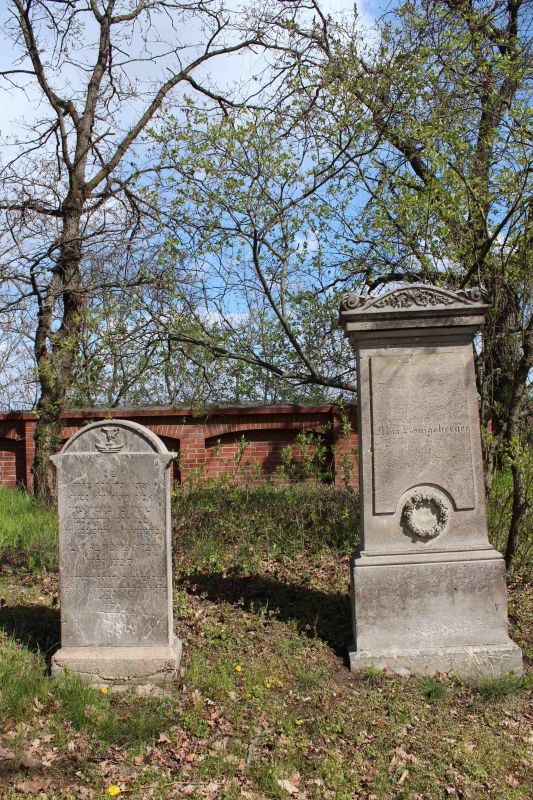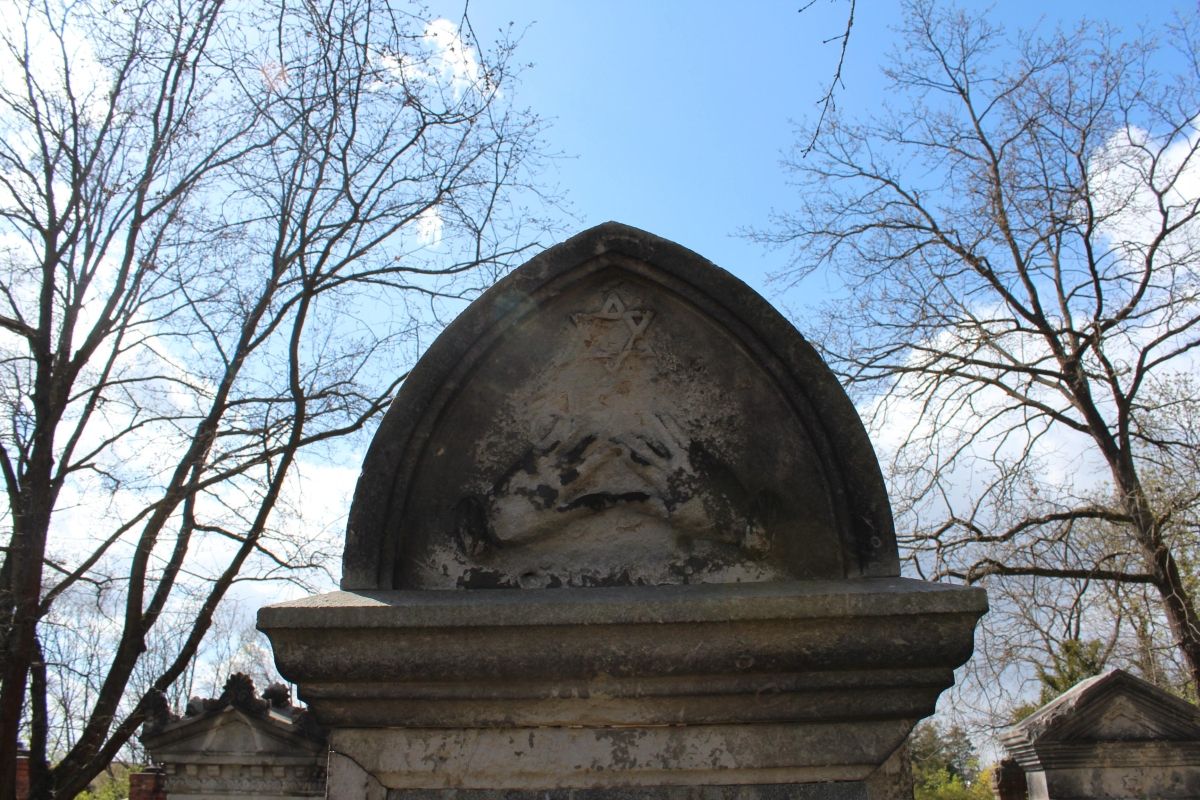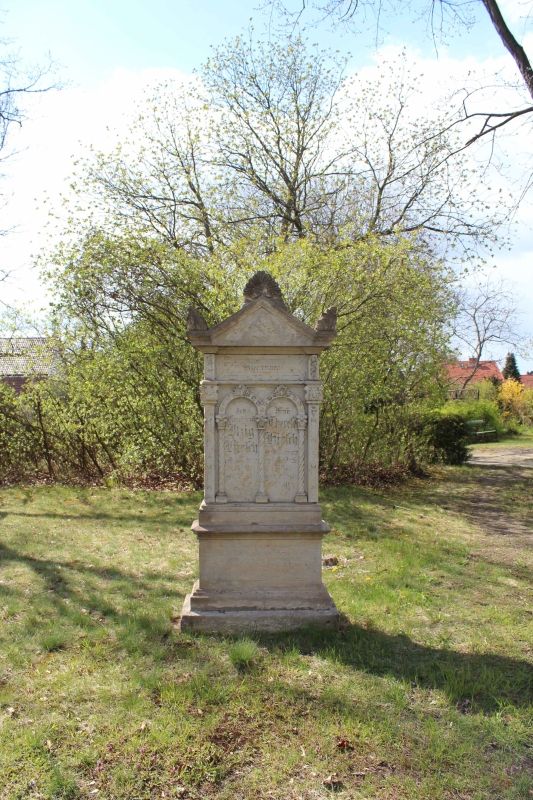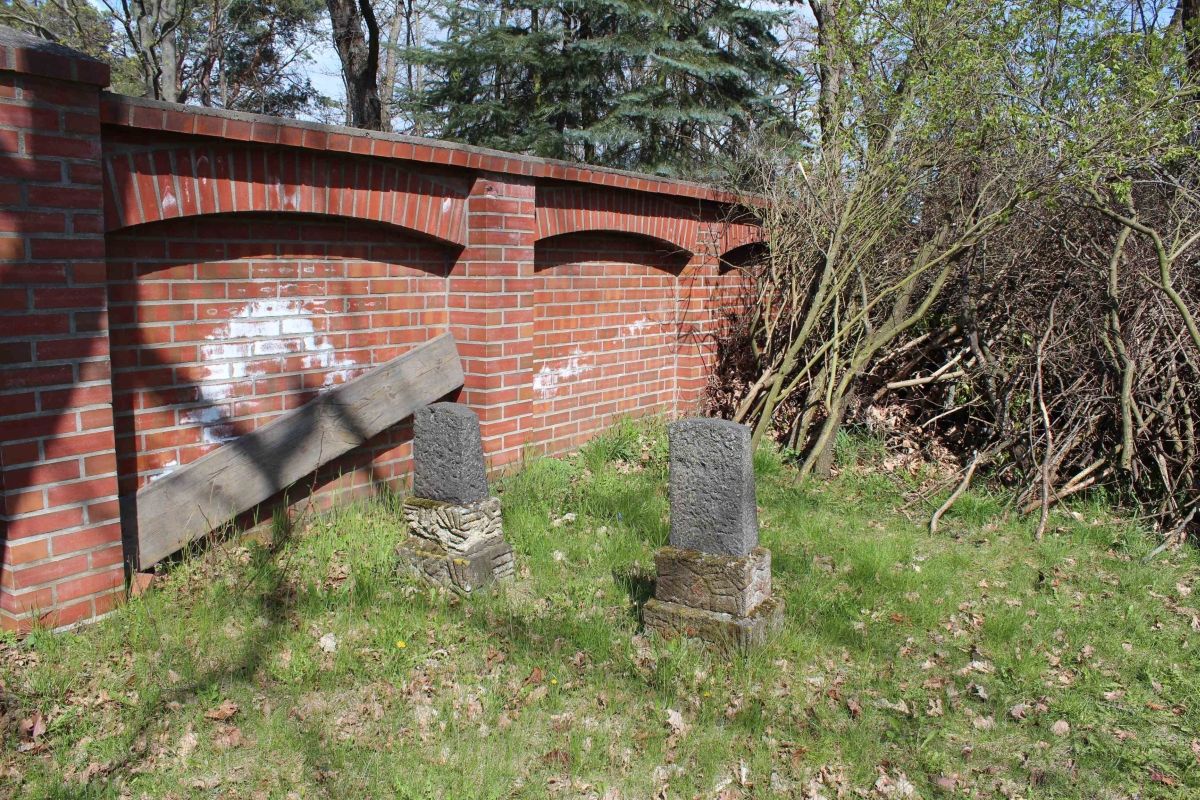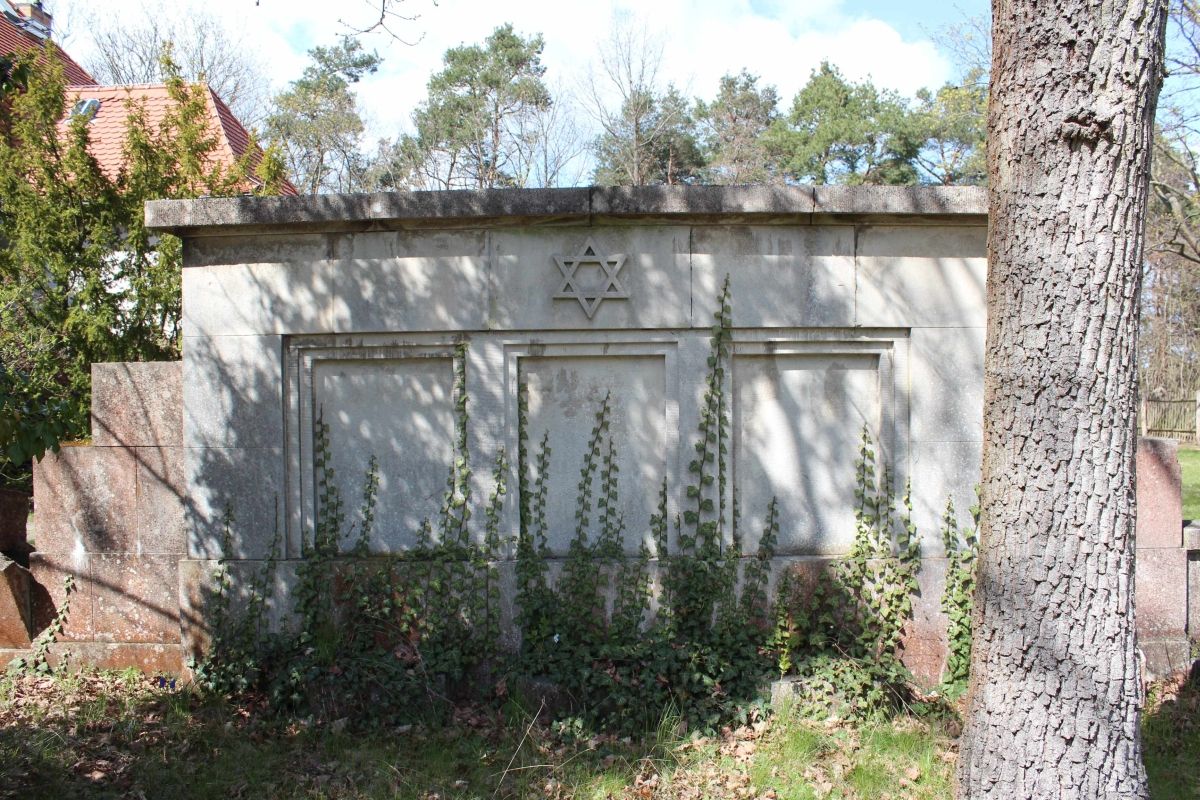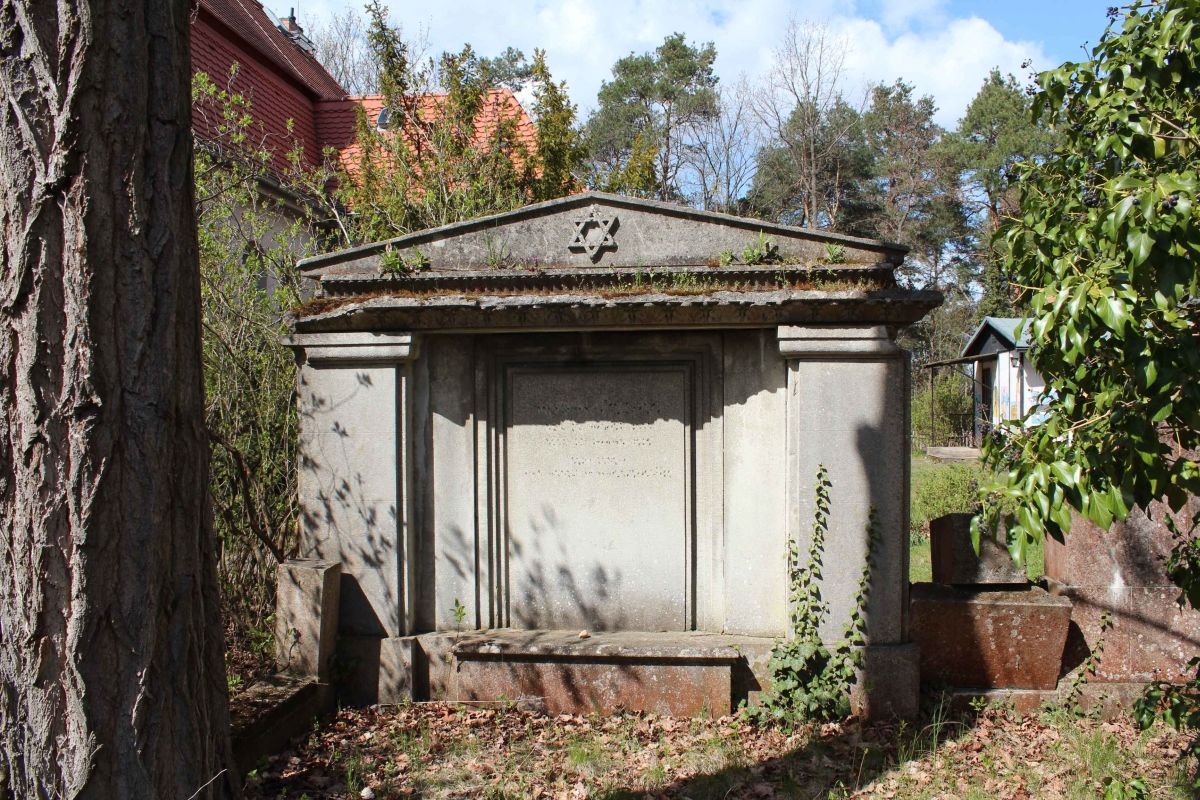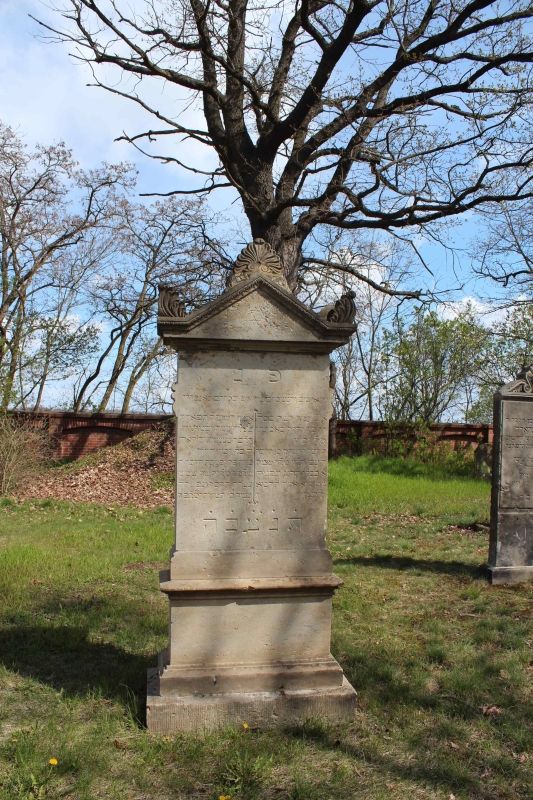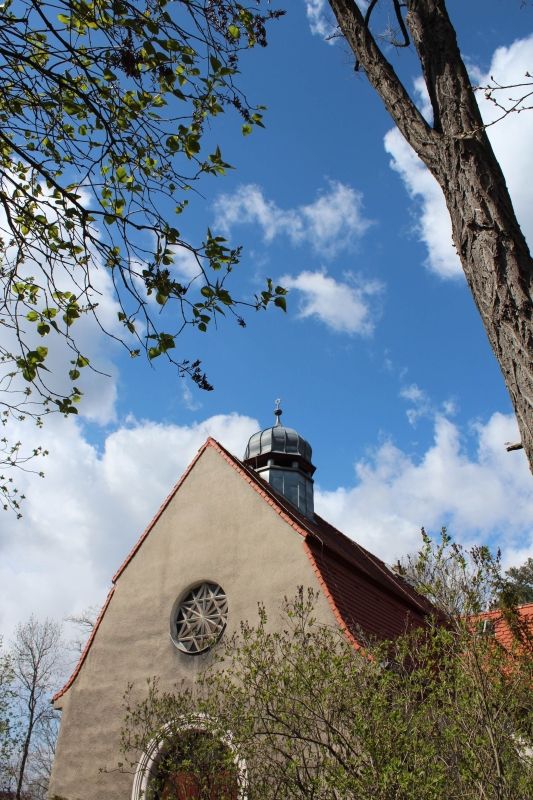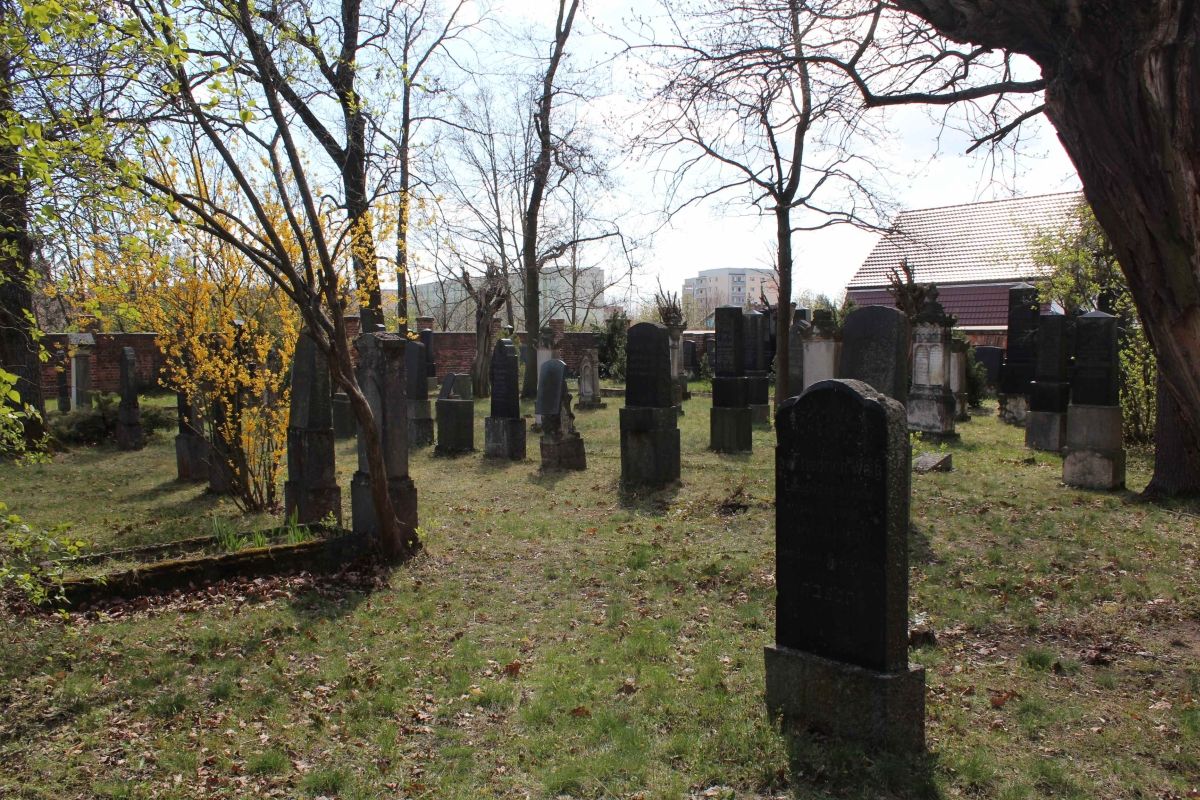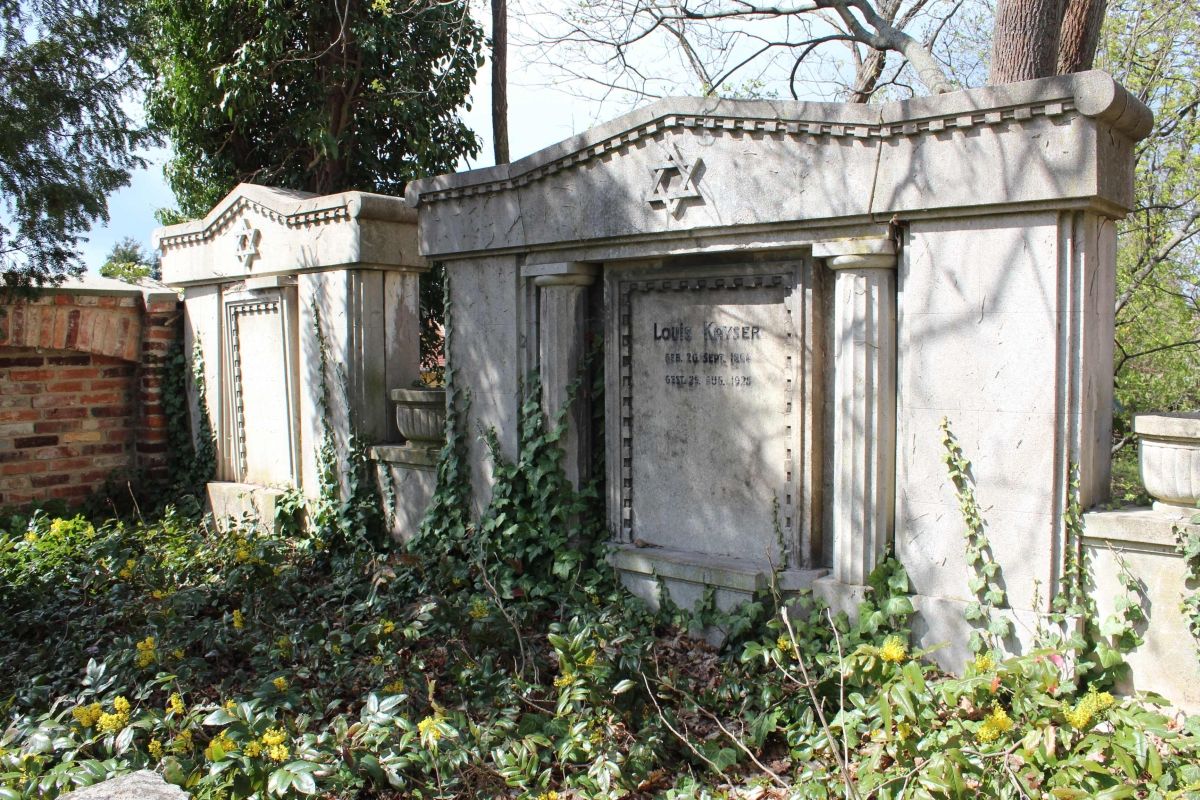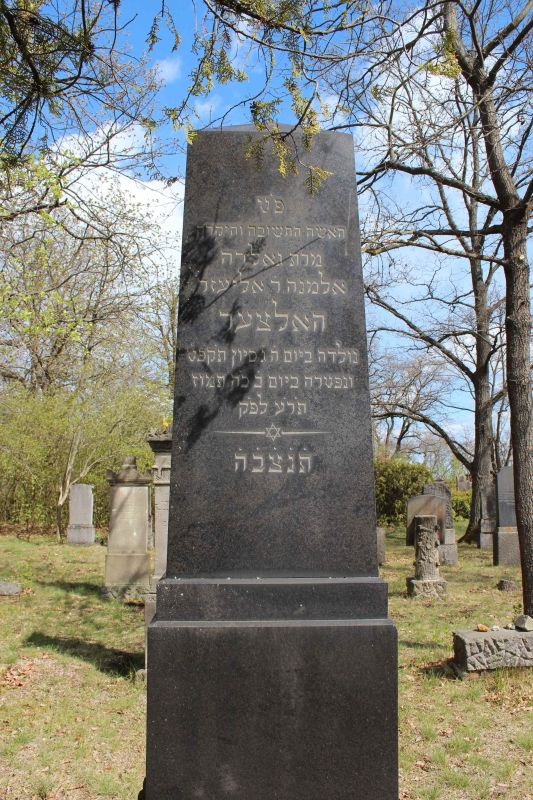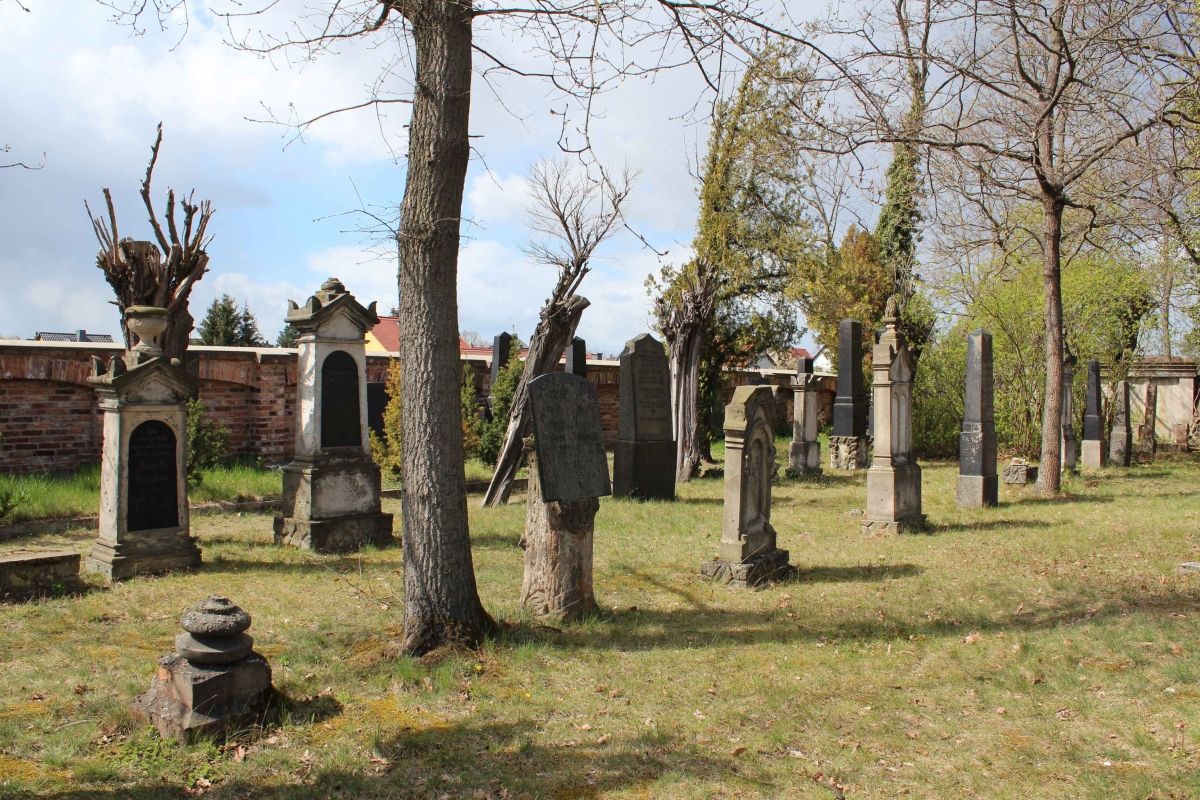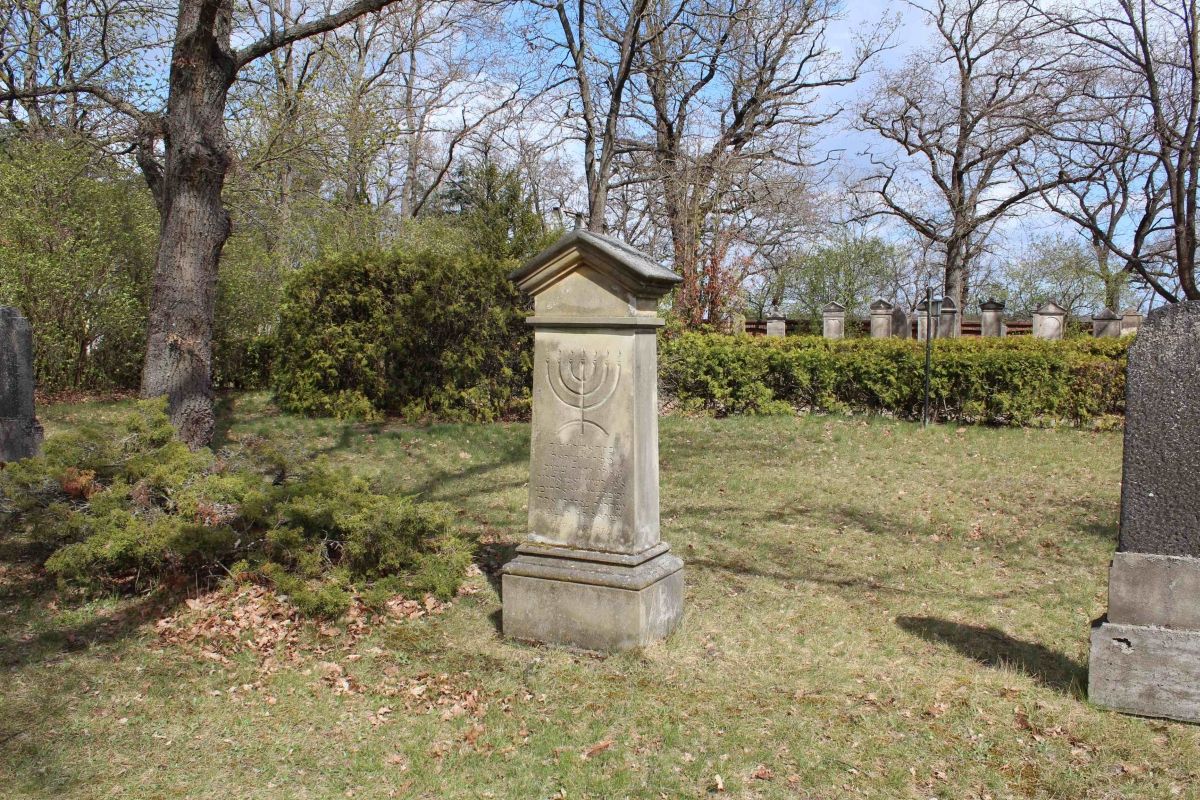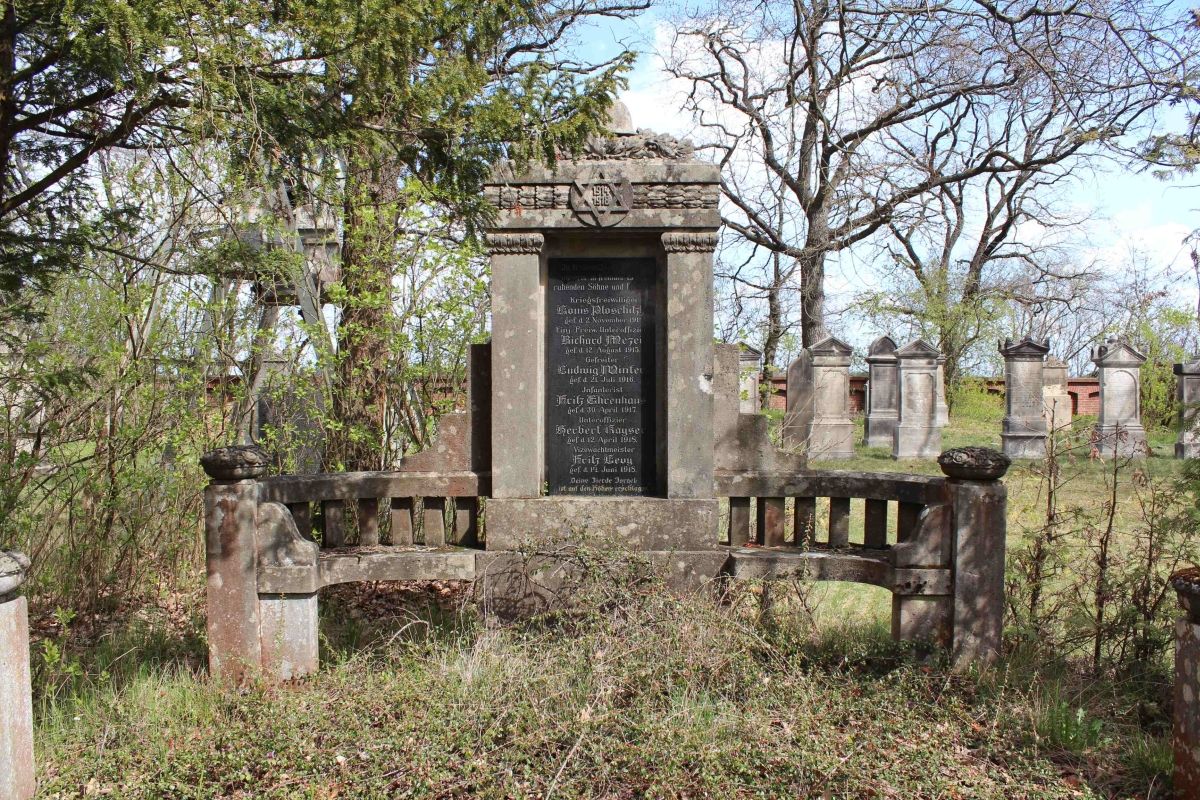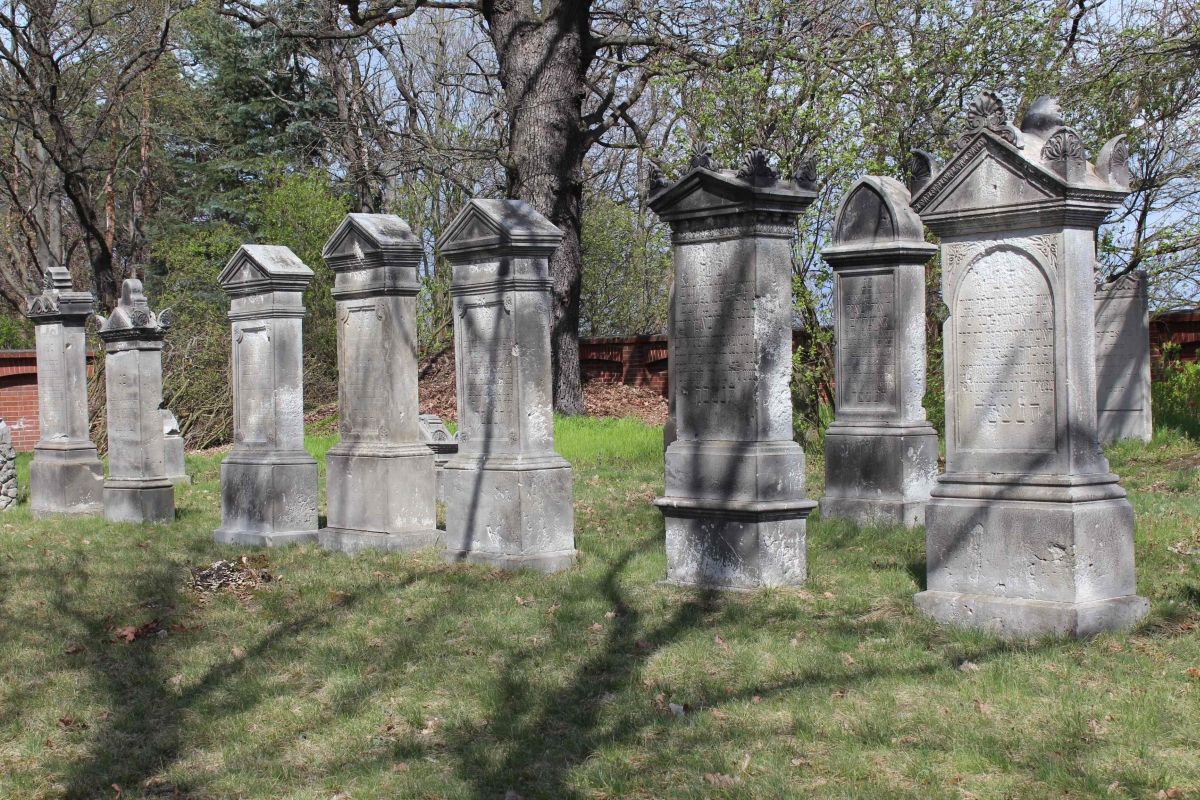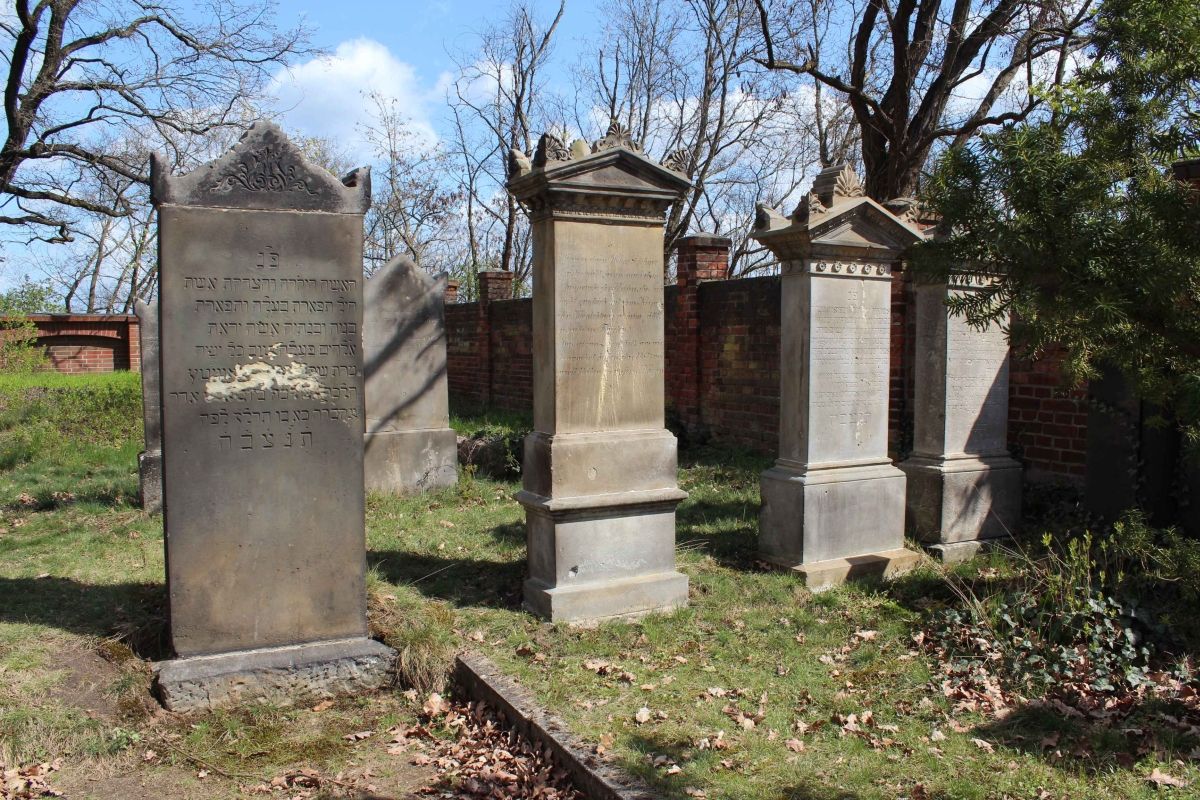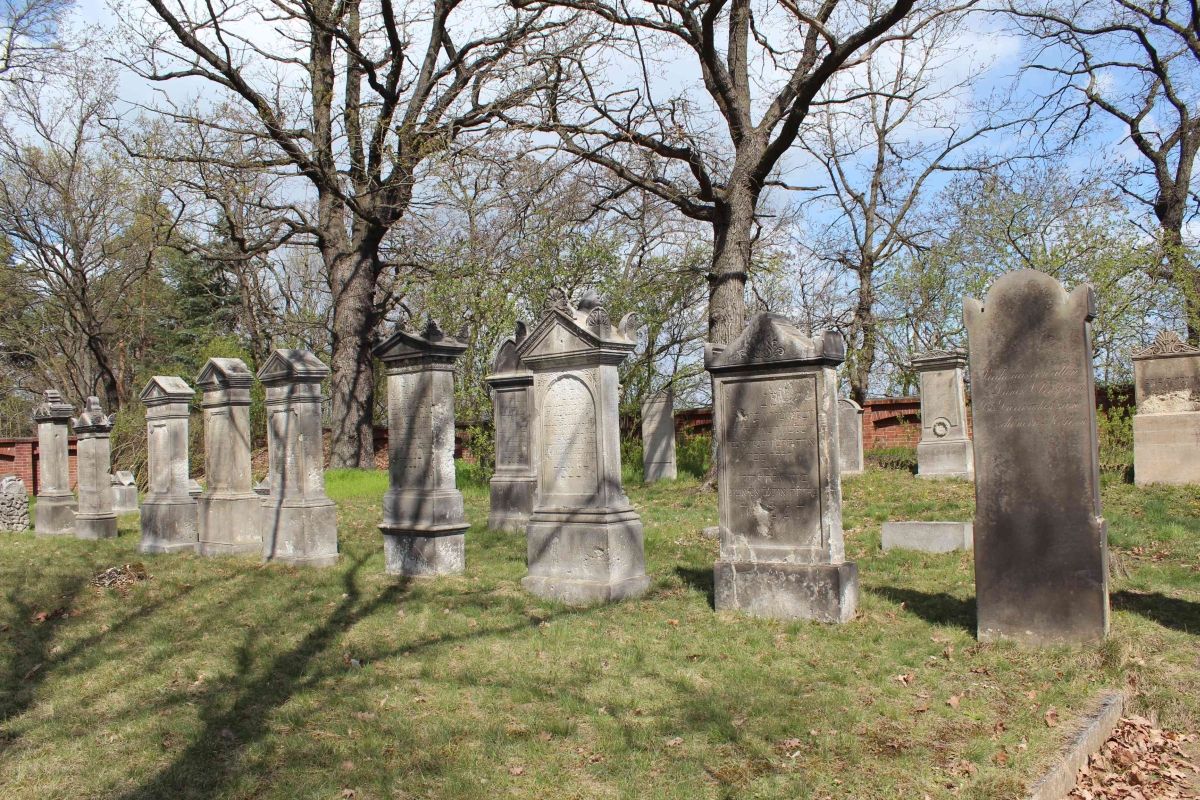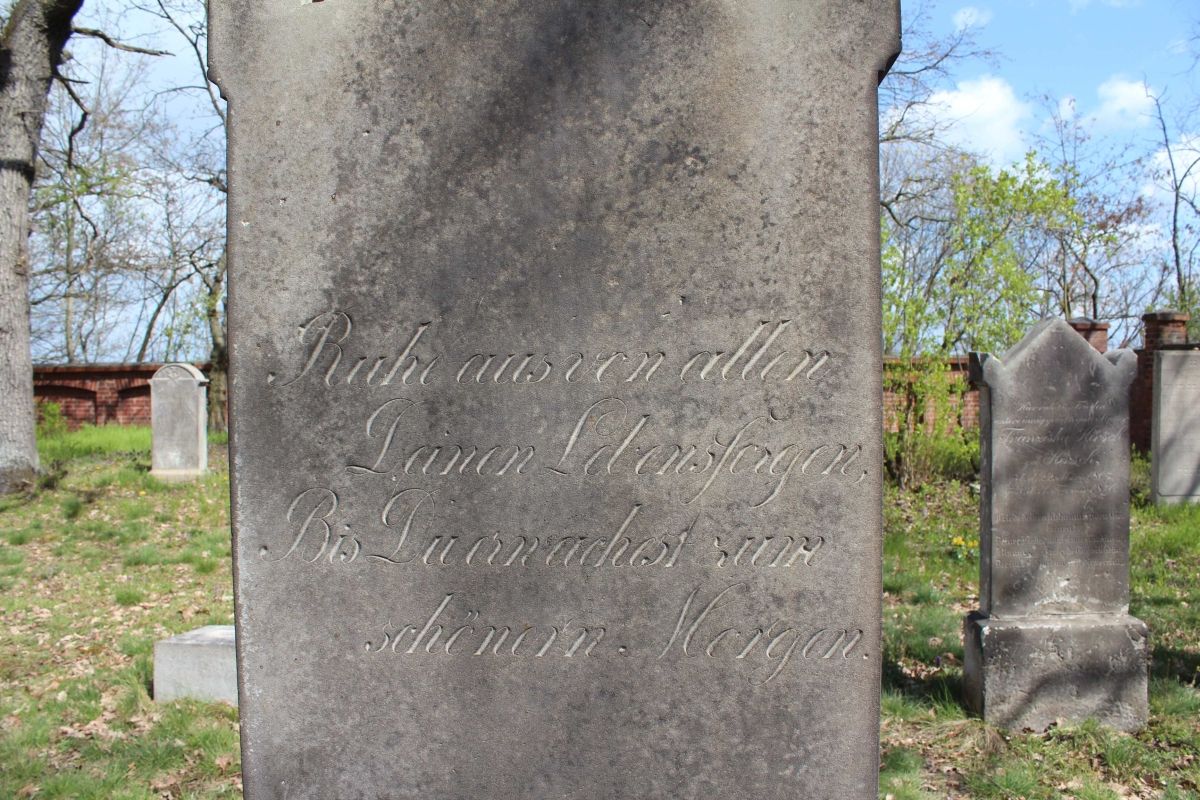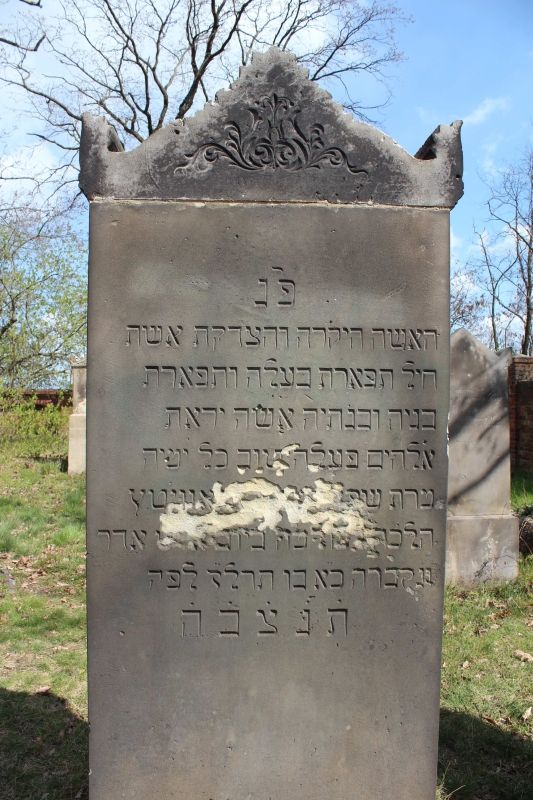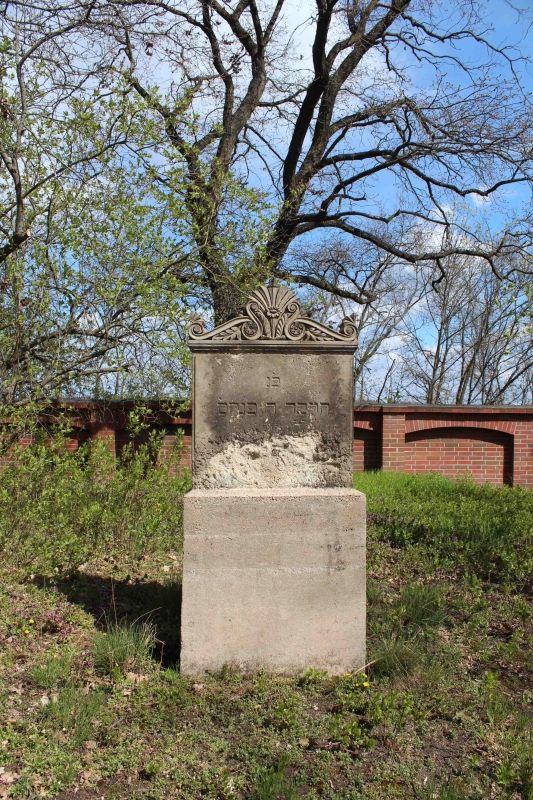
A chapel on a hill with a Jewish cemetery and a war memorial
Historical Monuments

Description
The chapel is a simple, single-story structure on a cross plan. The building, half plastered, and half covered with clinker bricks, is closed with a transverse mansard roof topped with a small helmet roof at the top. A simple portal with a double entrance door and a small skylight, supplemented from the top with a round rosette with glazing in the form of a Star of David. Inside there is a central room with a vaulted wooden ceiling that has been decorated with decorative inscriptions.
Another element is a 40 are cemetery surrounded by a large brick wall, where from the mid-18th century to around the 30s of the last century, the community of the Jewish commune of Guben buried their dead here. From the entrance to the necropolis to the chapel, there is a main path that divides the cemetery into two fields with a total of 118 graves - the oldest preserved tombstone dates back to 1856. In the eastern part, a symbolic belfry has been erected: two large, steel bells and a stone are to commemorate the members of the Jewish community in Guben killed by the Nazis. It is the only place in Guben that commemorates over 200 Guben women, men and children of the Judaic faith murdered by the National Socialists.
The last element of the complex is a tall, granite war memorial located at the path to the chapel. It consists of two plaques: one with the inscription "Our heroes", dedicated to the memory of 38 killed in Guben, one from Groß Breesen, five from Bresinchen and six from Grunewald. On the plaque, next to the names and surnames, the military rank and the date of death were engraved. The plaque is also decorated with a dilapidated stone laurel wreath. Another element is a smaller plaque with a quote from a marching song by Jäger Albert Methfessel from 1813 "And whoever finds death in a holy fight will rest [also] in a foreign land [as] in [his] homeland" (Ger.: »Und wer den Tod im heil'gen Kampfe fand, ruht auch in fremder Erde im Vaterland«).
Historical background
In 1839, for the needs of the Jewish community in Guben, in the area of the so-called Reichenbach Hills (Ger. Reichenbacher Berg) a cemetery was established. In 1911, the necropolis was additionally extended with a funeral hall. During Kristallnacht in 1938, this place, sacred to the local Jewish community, was desecrated and destroyed. The fights in 1945 and the acts of extreme vandalism committed by the defeated German army, retreating to the west, also did not bypass the cemetery, ruining it completely. In the same year, after the end of the war, the cemetery and the chapel were to be returned to the Union of Jewish Religious Communities - however, this act was obviously unsuccessful, because the 217-person Jewish community in Guben was almost completely exterminated during the Second World War. For this reason, in 1951, an agreement was signed between the Union of Jewish Communities and the Community of the Evangelical Church, according to which the Protestant community undertook to take care of the necropolis, while being able to use the funeral hall to conduct Evangelical services. From then on, the building was called the chapel on the Reichenbach hill. The Star of David was reinstalled on the building in 1992. The Jewish community, despite the decades-changing political and dogmatic moods, did not return to Guben.
Cottbuser Str. 54 B, 03172 Guben, Germany
A chapel on a hill with a Jewish cemetery and a war memorial
Chapel
Established: 1911
Rebuilding: 1970-1979 and 1992
Cemetery
Founded: 1839
Reconstruction: 1993-1994
War memorial: 1921
Chapel
Material: clinker
Technology: massive, plastered
Cemetery
Area: 40 are
War memorial
Material: stone
The necropolis is open all day and can be reached from Cottbuser Str. The area is not well lit, so it is recommended to visit the cemetery during the day.
The opening hours of the chapel itself could not be determined.



